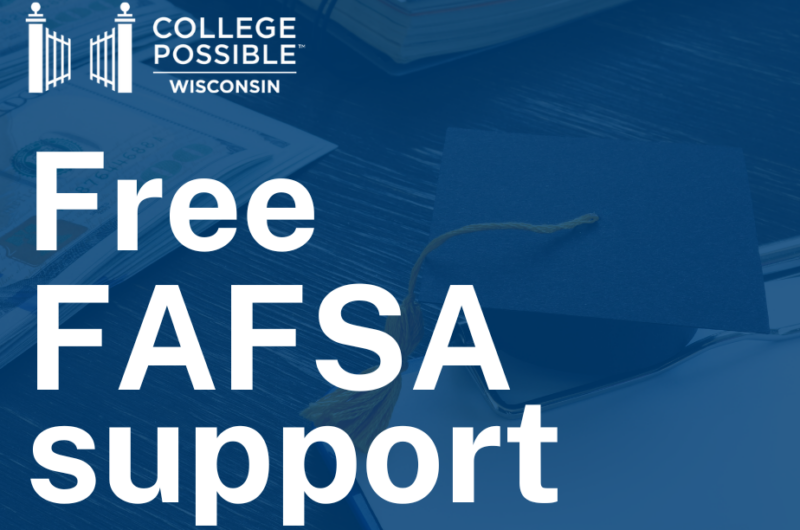The cost of college is one of the biggest and most common concerns among students who are interested in pursuing higher education. If you are feeling confused or overwhelmed by understanding the cost of college, you’re not alone. Explore the guide below to break down the costs of college and the financial aid options that can support you in paying for it.
The cost of college
The cost of attending college typically consists of two types of expenses:
- Direct Costs: Direct Costs are set amounts that are billed to students by the school’s financial aid department. Expenses like tuition and fees are direct costs. These can vary depending on the number of course-hours you take, but you will need to pay these in advance to enroll at your institution.
- Indirect Costs: Indirect Costs include expenses such as room and board, books and supplies, transportation, and personal expenses. These are called “indirect costs” because they are ongoing — you will pay these throughout the academic year. Lifestyle choices, among other factors, may impact the amount of your indirect costs.
After submitting a FAFSA, the amount of financial aid you will receive will depend on your Student Aid Index (SAI) subtracted from the institution’s Cost of Attendance (COA). This formula will identify your Financial Need. Institutions can award financial aid up to the amount of your demonstrated financial need. Take into consideration each school’s Average Financial Need Met when researching best-fit schools.
Types of financial aid
Let’s review the four main types of financial aid—scholarships, loans, grants, and work-study—and how to apply for each of them. For quick reference, download our financial aid chart. When you’re ready, check your understanding with our short financial aid quiz.
Scholarships
Scholarships are gifted aid—meaning you won’t have to pay them back. Most scholarships are awarded based on merit. For example, you may receive a scholarship based on your high school GPA or class rank, your SAT or ACT scores, or an essay that you submit. However, there are also scholarships that are based on financial need. For example, after submitting a FAFSA, your institution may award you a scholarship based on your demonstrated financial need.
How to apply:
It’s never too early to begin applying for scholarships! Researching and submitting scholarship applications should be something that you do year-round, but if you haven’t started yet, start now! Here’s how:
- Students often are most successful in receiving scholarships when they have a connection to the scholarship provider. Search for scholarships available in your community, take time to contact your:
- High school website to see if they offer a list of local scholarships available
- Local library or community center and ask what scholarships they may have available
- Employer or a parent/guardian’s employer
- Religious or community organizations
- Check out this resource from Federal Student Aid on how to find scholarships.
- CollegeBoard (the same folks who offer the SAT and AP tests) offers a free scholarship finder through BigFuture. You can find it here!
- AIE also has a great scholarship search tool. Simply enter your major, career, interests, hobbies, or something else to receive a list of scholarships.
- There are many other online scholarship matching services that can connect you with scholarship opportunities. Try searching the web for scholarships related to your chosen major or career path, a hobby, or a special talent.
- Take a look at this resource on Ten Steps to a Strong Scholarship Applications from Texas OnCourse.
Student loans
Loans are a type of financial aid that must be paid back with interest. Postsecondary degrees are investments in yourself and in your future, and just like other large investments such as a house or a car, they often require a loan. There are three types of student loans that you may explore.
Federal loans
- Federal loans will typically have lower interest rates and more options for repayment than state or private loans. You apply for federal loans by submitting a FAFSA.
- The first time you accept federal loans, you will need to complete Entrance Counseling, which will provide you with information about understanding your loans, managing your spending, planning to repay, avoiding default, and prioritizing your finances.
- There are four types of Direct Loans available:
- Direct Subsidized Loans are made to eligible undergraduate students who demonstrate financial need to help cover the costs of higher education at a college or career school.
- Direct Unsubsidized Loans are made to eligible undergraduate, graduate, and professional students, but eligibility is not based upon financial need.
- Direct PLUS Loans are made to graduate or professional students and parents of dependent undergraduate students to help pay for education expenses not covered by other financial aid. Eligibility is not based on financial need, but a credit check is required. Borrowers who have an adverse credit history must meet additional requirements to qualify.
- Direct Consolidation Loans allow you to combine all of your eligible federal student loans into a single loan with a single loan servicer.
State loans
- The College Access Loan (CAL) Program offers loans to Texas students who have a financial need that is not covered by other types of financial aid. Students need to be a Texas resident but do not need to be a U.S. citizen. However, you will need a cosigner who is a U.S. citizen or permanent resident. Apply here.
Private loans
- Private loans are offered through banks, foundations, or sometimes schools. Private loans will often have higher interest rates and fewer repayment options. You may check with your bank about their student loan programs, but explore other options first.
Grants
Grants are another type of gift aid. Generally, grant aid does not need to be paid back unless you withdraw early from the program for which the grant was awarded, your enrollment status changes, or you receive additional financial aid that reduces your financial need. There are three different types of grants:
Federal grants
- There are several different federal grants that can contribute thousands of dollars toward your higher education. Some examples include the Pell Grant, the Federal Supplemental Education Opportunity Grant (FSEOG), and the TEACH grant. Apply for federal grants by submitting a FAFSA.
State grants
- Texas also offers several different grants, such as the Texas Educational Opportunity Grant Program (TEOG), Texas Equalization Grant Program (TEG), and the Texas Public Education Grant Program (TPEG).
- Students must be a Texas resident to be eligible but do not need to be a U.S. citizen or permanent resident. Apply for Texas state grants by submitting a FAFSA or a TASFA (but not both).
Institutional grants
- Many postsecondary institutions also provide grants. You may check your school’s financial aid website to see what grants they offer. Apply for institutional grants by submitting a FAFSA or a TASFA (but not both).
Work-study
Federal Work-Study is a program that allows students with financial need to work part-time jobs in order to earn money for education expenses. Students are not guaranteed to receive employment and will need to apply for work-study positions. Once you receive a work-study position you will be paid with a paycheck, just like you would in a non-work-study job. However, you can request that your school use your pay for education-related charges such as tuition, fees, or room and board. Apply for work-study by submitting a FAFSA. Recipients of Federal work-study must be eligible to submit a FAFSA.
Avoiding scams
Unfortunately, there are many scams out there relating to applying for and receiving each of these types of financial aid. Be cautious before sharing any personal information. Don’t pay any money to submit your FAFSA or TASFA. Check out this guide from Federal Student Aid on how to avoid financial aid scams.
Next steps
Now that you understand the different types of financial aid let’s explore how to submit a FAFSA or a TASFA.



